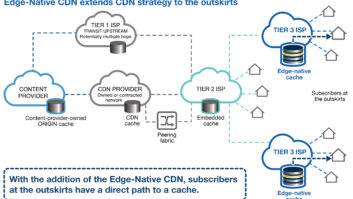
Over the last few years we have seen a lot of heavy investment in HD, driven by a mounting consumer demand for high quality video content, particularly on bigger screens such as TVs and tablets. Its importance to the overall TV experience continues to grow; HD quality has been pinpointed by consumers as one of the three most important TV and video services in each of the past three years [Ericsson ConsumerLab TV and Video Consumer Trend Report 2012].
Now the TV industry is moving towards the next generation of high quality TV screen technology; Ultra High Definition Television (UHDTV). UHDTV means television that is using any resolution that is above currently broadcast High Definition (HD) Television formats. Currently, the maximum transmitted HD resolution is 1920 pixels x1080 lines, so any resolution above that is considered UHDTV, although in practice, UHD refers to display resolutions of 3840×2160 or higher.
However, the level of investment in HD will make the upgrading of the content workflow and processing stages to UHDTV harder to justify, particularly as the costs for HDTV conversion have yet to be fully amortised. Nevertheless, the prominence of UHDTV technology at the 2013 International Consumer Electronics Show (CES) highlights its importance in the eyes of manufacturers today. As with all new technologies, consumer demand will be crucial to the future of UHDTV and thanks to the steady evolution of digital television over the last decade, most professional products will become UHDTV/4K ready quickly.
Terminology, resolutions & frame rates
The ITU has recently defined1 two specific formats for use in UHDTV systems:
- UHDTV Level 1 – Resolution: 3840 x 2160
- UHDTV Level 2 – Resolution: 7680 x 4320
UHDTV Level 1 is also known colloquially as ‘4KTV’; however this is a somewhat ambiguous term because the digital cinema industry uses different resolutions to refer to “4k”.
3840×2160 is the only ‘4K’ resolution for television use. The resolution is exactly 2x horizontal and 2x vertical compared to the existing 1920×1080 HD resolution. The aspect ratio, like HD, is 16:9.
Although there are several possible frame rates, including 23.976Hz for film content, the primary frame rates of interest for television content are 50.0Hz and 59.94Hz (so 2x frame rate of HD). In fact, discussions are underway in the industry to determine if higher frame rates, such as 100, 120, 150 frames per second may be necessary.
The baseband data rate is therefore at least 8x that of conventional HD, or approximately 12Gbps.
UHDTV Level 1 equipment exists today. The term ‘UHDTV Level 1’ is not commonly used, but instead ‘UHDTV’ is generally taken to mean ‘UHDTV Level 1’. The Consumer Electronics Association recently adopted the term “UHD” to refer specifically to 3840×2160, even though the ITU-R and SMPTE specifications also define higher resolutions for UHDTV. The majority of this article will consider only UHDTV Level 1.
Why UHDTV?
UHDTV as an origination format has a number of advantages.
Master copy in a higher resolution: Long before HD was delivered to the home, content was filmed and produced in HD, because filming in SD would mean that no higher resolution would ever be available.
Better standards & format conversion: Deriving 1080i at 25Hz or 29.97Hz can be done with higher quality, starting with a UHDTV Level 1 master. 720p at 50 or 59.94 Hz can likewise be derived with higher quality.
Electronic pan/zoom: It is possible to use UHDTV Level 1 as an origination format, with the subsequent extraction of conventional HD content by electronically selecting part of the overall content. This has the potential to reduce operator cost in the field (i.e., at venues) and provide a better consumer viewing experience.
The term ‘4K’ can mean either any resolution in the range 3840 to 4096 horizontal by 2048 to 2160 vertical. ‘4K’ became common as a term referring to the Digital Cinema resolution of 4096×2160. ‘4K’ cinema content includes several aspect ratios beyond 16:9, such as 21:9, as many theatrical releases are shot for much wider viewing experiences.
Delivering 4K content to mass home audiences
Several challenges still remain. These include:
+ Finding the extra bandwidth required to dedicate the transmission path from service provider to the home. This is a daunting prospect as UHDTV/4K content will supplement — not replace — HD for many years to come.
+ Enabling new decoding devices (integrated into TVs, set-top-boxes (STB), gaming consoles, etc.), which need to handle the higher resolution of UHDTV, as most existing devices were not designed to support more than HD.
+ Upgrading the entire end-to-end content process chain to 4K native capture and production. This will be a necessary change before terrestrial broadcasters can get to the point of transmission.
In the immediate future, content acquisition must be mastered in the highest picture quality possible, even if the roll-out of UHDTV to the home isn’t feasible at present. This will jumpstart the pipeline of content availability and help operators understand the best practices for capturing this new technology.
The demand is there; the Ericsson 2012 ConsumerLab TV and Video Consumer Trend report highlights a high willingness among consumers to pay for 4K ‘extreme quality’ as part of their TV and video service. It’s now up to broadcasters to make it a reality.
By Matthew Goldman (pictured), head of TV Compression Technology, Ericsson







